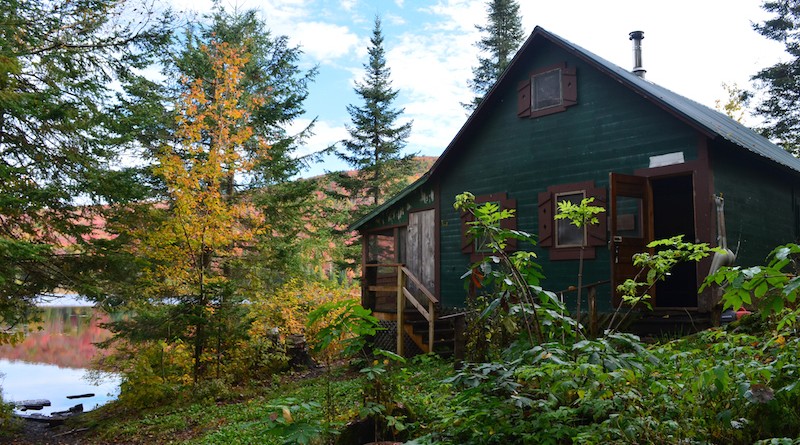Vermont’s Hidden Huts
Set high in the Green Mountains or tucked into the forest, simple huts are being renovated as backcountry outposts for any season.

When volunteers with the Rochester Areas Sports Trail Alliance (RASTA) began developing glades in the Braintree Mountain Forest near Randolph in 2014, they came across a cabin in the woods. The Bell Gates Cabin—an overnight spot for loggers in the 1970s—was in disrepair. Dead leaves and trash covered the floors and ratty screens hung in the windows.
Since then, the Bell Gates Cabin has gotten a facelift in the form of new windows and doors, a wood stove, insulation, a front deck and a new coat of paint. “It’s nothing glorious, but it has a much better feel to it,” RASTA volunteer Zac Freeman says. This fall and winter, the cabin will be one of several around the state that are being renovated to serve as outposts for backcountry adventures.
For many hikers and mountain bikers, skiers and riders, the dream isn’t to just spend the day on singletrack trails or chasing untracked powder—it’s to end it in a cozy cabin with a wood stove, a rack to dry skins and stinky socks and a bunk where you can stretch out in a sleeping bag and dream of the next day’s adventures.
Colorado has the renowned 10th Mountain Division trail and hut system in the Rockies. In the Gaspé Peninsula’s Chic Choc Mountains, a series of huts are within hiking or skiing distance. Options for overnight stays in neighboring states include the Adirondack Mountain Club huts in New York, and huts maintained by the Dartmouth Outing Club, Randolph Mountain Club and Appalachian Mountain Club in New Hampshire’s White Mountains. Maine Huts and Trails, a non-profit in western Maine, manages a system of backcountry cabins on 80 miles of former logging trails open for cross-country skiing and snow-shoeing in the winter and mountain biking or hiking in the summer.
These professionally-managed huts feature a range of amenities, from full-service retreats with porters, bedding and hot tubs, to more spartan affairs with a simple countertop, a few cots and a wood stove (you provide the rest).
Vermont may not have anything like this (yet) but the state is no stranger to backcountry travel and there are existing resources.
The Long Trail is home to over 60 shelters along its 272 miles, including simple lean-tos and more developed cabins with four walls, woodstoves and bunks. While staffed during the spring, summer and fall hiking seasons, the cabins along the high elevations remain open even when the snow flies. None are winterized, but for those with backcountry experience and a sleeping bag good into the single and negative digits, overnighting in cabins becomes possible.
At the end of many of Vermont’s abandoned logging roads stand derelict cabins or sheds that could be converted into the kind of backcountry rest stations that RASTA has created. Now, that’s happening: a number of older cabins, ranging from Stowe’s famous Stone Hut to Wheeler Pond’s Beaver Dam cabin in the Northeast Kingdom, are being renovated.
“With existing and new construction, Vermont backcountry skiing is positioned well to benefit with more connection to infrastructure,” Freeman says.
The dream of a hut-to-hut trail network is looming larger as interested parties, including property owners, are starting to collaborate on ways to link existing shelters around the state as part of the newly formed Vermont Huts Association.
“It’s a conversation that’s just getting started,” says Greg Maino, communications and events coordinator for the Catamount Trail Association in 2016. “Everyone wants to talk about the hut-to-hut experience in Vermont, but we’ve still got questions to answer.”
Questions like: Who owns and maintains the huts? Are they reserved months or weeks in advance or run on a first-come-first served basis? Who’s responsible for the firewood and where’s the bathroom?
It’s these questions—the simple but head-scratching ones—that a new organization is going to attempt to answer. In fall 2016, a duo of diehard backcountry skiers created the Vermont Huts Association to chart and unify as many of Vermont’s huts as they can under a centralized system open year-round to skiers, bikers and more. Think of it like Airbnb for backcountry travelers.
“I find myself wondering how the heck this hasn’t happened yet,” says one of the group’s founders, RJ Thompson, who also started the adventure race company Native Endurance last year. “Vermont’s an amazing place for year-round outdoor recreation and we have politicians talk about the importance of recreation in Vermont and so I think there’s a critical mass of individuals who are ready to make Vermont known as one of the greatest recreation states in the country.”
The group also hopes to spearhead construction of additional yurts and cabins to complete a network from Massachusetts to Vermont. While it’s a scheme that could take upwards of ten to 20 years to come to fruition, Thompson and his co-director Devin Littlefield are willing to play the long game.
“You’ve got to be patient,” Thompson says.
In 2016, Mt. Mansfield’s Stone Hut was re-opened to the public following close to a year-long closure after the historic building sustained damage in a fire. Bryant Cabin was also restored the same year and is now open to skiers. As of May 2018, renovations are ongoing at Wheeler Pond’s Beaver Dam cabin. The Vermont Huts Association has not announced a final location for its first new hut, but the organization hopes to place it near the Chittenden Brook Campground outside of Rochester, Vermont this year, pending approval by the Green Mountain National Forest. The hut, which was constructed in Waitsfield by the Yestermorrow Design/Build School, will be heated, sleep 10 and a have a propane stove.
By next year, many of these should be ready for year-round use. “These cabins are part of a legacy of backcountry travel,” said Michael DeBonis, executive director of the Green Mountain Club. “Restoring them will allow future generations to enjoy them year-round.”
Sidebar: 5 Cabins for Any Season
You don’t need to wait until the deep snow arrives to settle in at one of Vermont’s backcountry cabins. Make a reservation, throw on a backpack and head out on the trail.
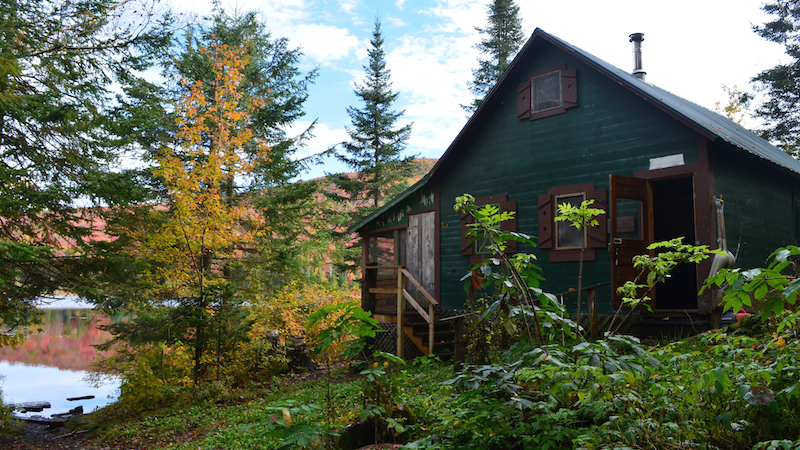
Photo courtesy Megan Duni/Green Mountain Club
Wheeler Pond: Hadsel-Mares Cabin, Barton Vt.
For a getaway in Vermont’s Northeast Kingdom, reserve a night in one of two secluded cabins on the shores of Wheeler Pond at the edge of Willoughby State Forest in Barton, Vt. While the Beaver Dam Cabin is closed for repairs and could open as soon as next year, the neighboring 650 sq. ft. Hadsel-Mares Cabin has a simple design with a wood stove and sleeping space for six in an elevated loft. While lacking electricity, running water and cell service, you’ll have a massive outdoor playground, including over 40 miles of trails in the Willoughby State Forest (including trails to the summits Mount Pisgah and Mount Hor) and, in the fall, paddling on ponds and lakes. In the winter, bring your skis to explore the backcountry glades developed by the Northeast Kingdom Backcountry Coalition in the Willoughby State Forest or go ice climbing on the cliffs above Lake Willoughby. Reservations are $65 per night or $45 per night if you book for more than seven days with 30 percent off for GMC members. Visit greenmountainclub.org for reservation information.
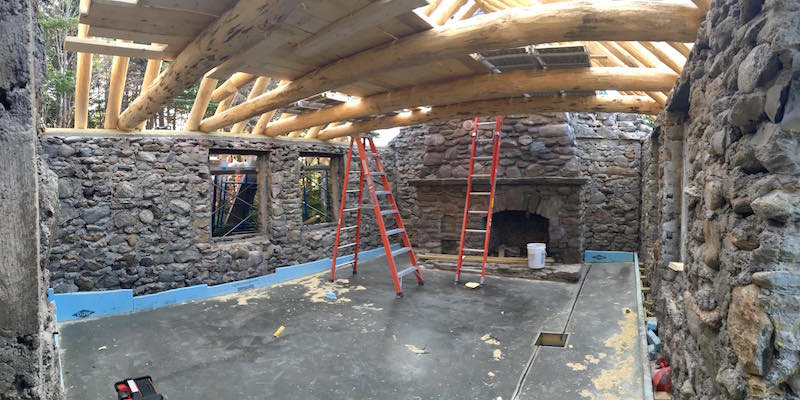
Mount Mansfield’s Stone Hut, Stowe, Vt.
In late September 2016, a crane lifted a new roof onto the sandblasted stone walls of Vermont’s most popular backcountry cabin, Stowe’s Stone Hut, readying it for guest use that winter following a devastating fire on Christmas Eve, 2015. Built in 1936 by the Civilian Conservation Corps, the hut is outfitted with a large stone hearth, a wood stove and wooden bunks that can sleep 12. Reserved for trail keepers in the summer, but open to the public in the winter, the hut is so popular it takes winning a place in a lottery system to get a night there. For those lucky enough to land a stay, the prize is often first tracks down Nosedive or Goat at Stowe, or the numerous backcountry lines off the summit. On December 23, 2015, Timothy and George Carpenter (whose parents, Jake and Donna founded Burton) went up to prepare the cabin for some friends who were arriving later, stoked the fire and left the wood stove door open. It’s a cautionary tale: the friends never arrived, a piece of wet wood leaning against the stove caught fire and destroyed much of the original structure. There was a huge public outcry and thanks to a $150,000 donation from the Carpenters, as well as others, the hut was restored. In August 2016, the Vermont Department of Forest Parks and Recreation awarded a $276,500 bid to Morrisville builder Donald P. Blake Inc. The hut was reopened in to the public on November 1, 2016. The cabin, which is used by trail keepers in the summer, is only available for rental during the winter for $225 a night. Check vtstateparks.com for updates and reservations.
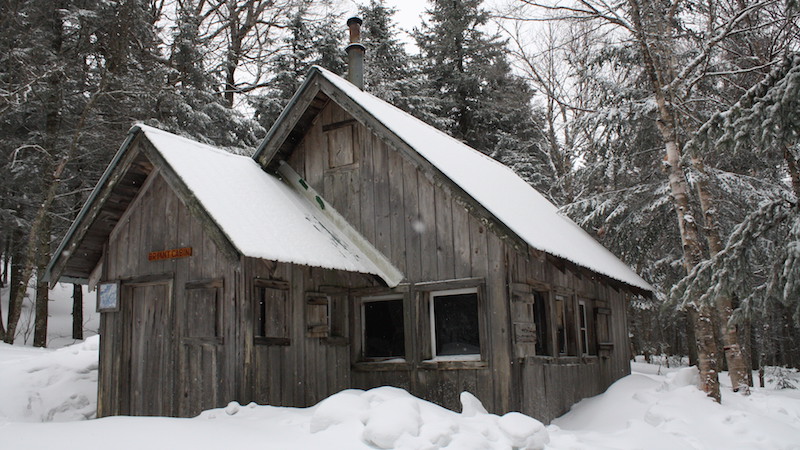
Bolton Lodge/Bryant Camp
Set high among the alpine forests above Bolton Valley’s Nordic and alpine ski trails, are two cabins built in the 1930s by volunteers with the Burlington chapter of the Green Mountain Club. The Bolton Lodge was designed after the cottages of Wales and Ireland, with a stone foundation, stucco walls and bunks for 12. The nearby Bryant Camp has a sleeping loft for six and features plain wooden construction. Located near both the Long Trail and the Catamount Trail, these two cabins have been popular overnight spots for hikers heading north to Mount Mansfield or south towards Camel’s Hump and for skiers exploring Bolton Valley’s alpine and Nordic ski trails. The two cabins can also be a starting point for backcountry skiers traveling from Bolton Valley to the Trapp Family Lodge, by way of the Catamount Trail. Both huts have new bunks, wood stoves, shelves and cooking spaces from recent restorations.
Accommodations at Bryant Camp are available by prior reservation through the Green Mountain Club’s website greenmountainclub.org. Overnight rates are $95 per night Friday through Sunday, $75 per night Monday through Thursday. Winter guests are required to purchase a Bolton Valley Nordic Ski Pass for the duration of their stay. Free overnight parking is available at Bolton Valley Nordic Center, 4302 Bolton Valley Access Road, Bolton Valley, Vt. Allow approximately one hour to approach Bryant Camp on skis or snowshoes. For more information about the cabin and to make reservations, visit greenmountainclub.org. For more information about the ski trails, visit boltonvalley.com. Find out more at greenmountainclub.org.
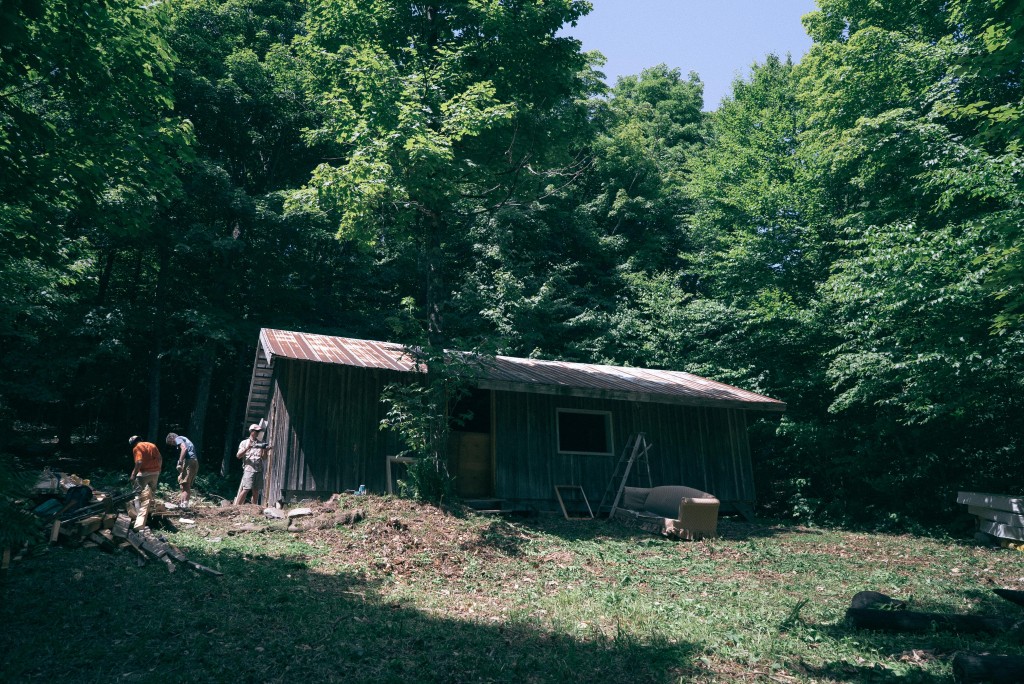
Bell Gates Cabin, Braintree, Vt.
Set into the mountains surrounding the central Vermont town of Braintree, off Route 12A is a backcountry skier’s paradise. Thanks to the hard work of volunteers with the Rochester Area Sport Trails Alliance, you can explore the beautifully crafted glades off of 2,901-foot Skidoo Mountain and follow a skin-track back to the top to earn your turns all day long. After a long day, you can retire to the Bell Gates Cabin, a fully restored cabin with a new woodstove that will sleep up to ten. It’s available on a first-come, first-served basis and you have to locate it yourself. Visit rastavt.org for maps and information.
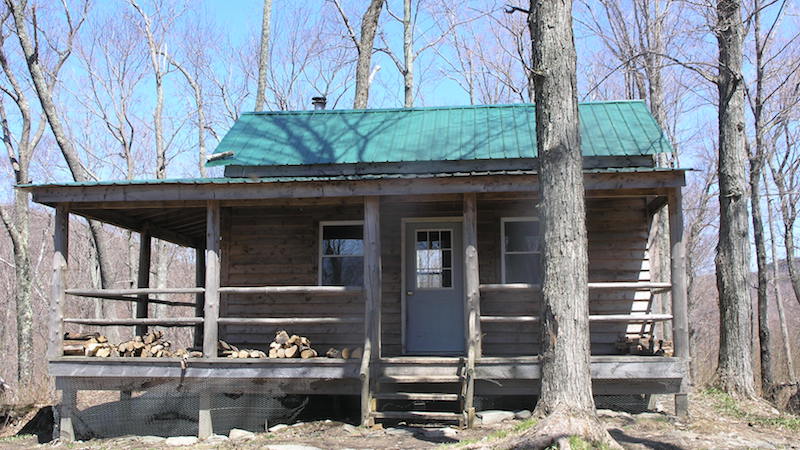
Merck Forest Cabins, Rupert, Vt.
For a secluded getaway in the southern Vermont forest, you can book one of eight cabins at 3,162-acre Merck Forest & Farmland Center in Rupert, Vt. The cabins sleep between two and twelve and are furnished with tables, woodstoves, bunks, porches and rocking chairs. Some have lofted bunks and space for tents nearby. These cabins are hiking distance from the visitor’s center and have views of hay pastures and surrounding mountains in southern Vermont. Come with friends for a weekend of cross-country skiing or snowshoeing on over 30 miles of trails that water through 3,000 acres. Cabins are $50 to $75 in the summer and $65 to $90 in the fall, winter and spring. Head to merckforest.org to book.

